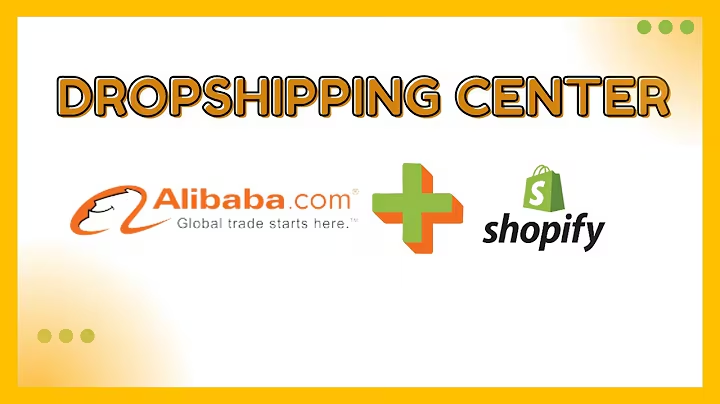Choosing the Right Shopify Subscription App: Expert Insights
Table of Contents
- Introduction
- The Rise of Subscription Apps
- The Complexity of Choosing the Right Subscription App
- Subscription Expertise: Andre Rudnick
- The Importance of Defining Your Subscription Strategy
- Different Types of Subscription Models
- Subscribe and Save
- Builder Boxes
- Memberships
- Determining if Your Business is a Good Candidate for Subscriptions
- Legacy Subscription Apps: Recharge and Bold
- The Process of Migrating from Legacy Apps
- The Evolution of Subscription Apps in the Shopify App Store
- Predictions for the Future of Subscription Apps
- Key Advice for Growing a Subscription-Based Business
Introduction
In today's world, subscriptions have become increasingly popular as a way for businesses to generate recurring revenue. With the sheer number of subscription apps available in the Shopify App Store, choosing the right one can be a challenging task. In this article, we will explore the intricacies of selecting a subscription app and discuss the future of this rapidly evolving industry. We are joined by Andre Rudnick, a subscription expert, who will provide insights and guidance on navigating the vast landscape of subscription apps.
The Rise of Subscription Apps
The subscription model offers businesses a predictable and recurring revenue stream, making it an attractive option for many entrepreneurs. However, with the growing number of subscription apps available in the Shopify App Store, it can be overwhelming to choose the right one. Andre Rudnick, formerly of Bold Commerce and now at the helm of Good Subscription Agency, is an expert in the field. He has extensive experience working with subscription brands and will be our guide as we navigate the labyrinth of over 30 subscription apps available on the App Store.
The Complexity of Choosing the Right Subscription App
Selecting the right subscription app is no small task. It requires a thoughtful and strategic approach to ensure that the chosen app aligns with your business goals and objectives. With options ranging from subscribe and save to curated boxes and memberships, it is crucial to define your subscription strategy before diving into the selection process. Andre Rudnick emphasizes the importance of understanding your business's unique needs and identifying the most suitable subscription model.
Subscription Expertise: Andre Rudnick
Andre Rudnick, the founder of Good Subscription Agency, brings a wealth of expertise and knowledge to the world of subscriptions. With years of experience in the industry, he has tested, installed, suggested, and migrated to numerous subscription apps. His agency specializes in app matchmaking, helping brands find the perfect subscription app to optimize their revenue stream. In our conversation, Andre will share insights from his vast experience and help demystify the process of choosing the right subscription app.
The Importance of Defining Your Subscription Strategy
Before diving into the selection process, it is crucial to define your subscription strategy. This involves identifying your target audience, understanding their needs and preferences, and determining the type of subscription model that aligns with your business. Andre Rudnick explains that the most successful subscription brands are those that listen to their most valuable subscribers and tailor their offerings to meet their demands. By building a community for your most loyal customers, you can create a personalized and engaging experience that drives loyalty and enhances customer lifetime value.
Different Types of Subscription Models
There are various subscription models available, each catering to different types of products and customer preferences. Andre Rudnick highlights four core subscription models:
-
Subscribe and Save: This model is ideal for products that are consumable or replenishable, such as toiletries or household goods. Customers can set up recurring orders and enjoy the convenience of having products delivered on a regular basis.
-
Builder Boxes: Curated boxes are a popular choice for subscription brands that offer niche collectibles or high-quality products from different artists. These boxes provide customers with a unique and tailored experience, often featuring limited-edition items.
-
Memberships: This model offers customers exclusive access to certain perks or content in exchange for a monthly subscription fee. Memberships can be tailored to specific interests or industries, providing customers with added value and a sense of belonging.
-
Replenishment Programs: Replenishment programs are designed for brands that offer products that need to be replenished regularly, such as supplements or skincare products. Customers can sign up for recurring orders, ensuring they never run out of their favorite products.
By understanding these different subscription models, you can determine which one best aligns with your business goals and product offerings.
Determining if Your Business is a Good Candidate for Subscriptions
Not every business is suited for a subscription-based model. Andre Rudnick suggests that businesses with a high repeat purchase rate of 50-60% are prime candidates for implementing a subscription program. If customers consistently return to purchase your products, it is a strong indicator that they would benefit from a subscription option. Andre emphasizes the importance of identifying your most loyal and high-spending subscribers and understanding their specific needs. By doing so, you can tailor your subscription offerings to provide an exceptional customer experience and maximize customer lifetime value.
Legacy Subscription Apps: Recharge and Bold
For businesses currently using legacy subscription apps like Recharge or Bold, the migration process presents a unique challenge. Andre Rudnick explains that these apps were built outside of the Shopify ecosystem and primarily catered to large enterprise-level companies. However, with Shopify's announcement of discontinuing legacy checkouts by October 2024, businesses that rely on these apps must migrate to the new versions using Shopify's native checkout. Recharge has been proactive in facilitating this migration, ensuring a seamless process for their users. Bold, on the other hand, has shifted its focus to enterprise-level businesses and developed new API-first apps. The decision to migrate from legacy apps depends on your business's specific needs and goals.
The Process of Migrating from Legacy Apps
Migrating from a legacy subscription app can be a complex and time-consuming process. It involves more than simply swapping payment tokens. Third-party integrations, such as Clavio for notifications and SMS triggers, must be carefully managed during the migration process. Andre Rudnick advises businesses to consider these integrations and ensure that the app company or an internal team member takes responsibility for their smooth transition. However, if the migration process seems overwhelming, Andre suggests seeking professional assistance. Good Subscription Agency offers app matchmaking services, helping businesses select and migrate to the most suitable subscription app.
The Evolution of Subscription Apps in the Shopify App Store
As the subscription industry continues to grow, we can expect to see a flurry of acquisitions and mergers among subscription apps. Some smaller apps may struggle to find a niche and eventually disappear from the market. Andre Rudnick predicts that the future of subscription apps will be more specialized, with distinct functionality for different types of businesses. Builder box apps, membership-specific apps, and all-in-one apps that cater to various subscription models will likely dominate the market. Additionally, we may see the rise of low-cost leaders who offer affordable starter apps for businesses just entering the subscription space.
Predictions for the Future of Subscription Apps
The future of subscription apps in the App Store is characterized by increased specialization and niche targeting. As the industry matures, apps that can differentiate themselves and offer unique features will stand out. Larger apps may acquire smaller competitors to expand their feature sets and enhance their offerings. Andre Rudnick emphasizes that the key to success in this evolving landscape is to listen to your most valuable subscribers and continuously improve your product based on their feedback. By placing customer needs at the forefront, businesses can adapt and thrive in the ever-changing subscription market.
Key Advice for Growing a Subscription-Based Business
In order to grow a successful subscription-based business, it is crucial to listen to your most valuable subscribers. These are the customers who consistently support your brand and contribute to your revenue stream. By catering to their needs and preferences, you can create a loyal customer base and drive customer lifetime value. Andre Rudnick advises businesses to analyze their highest-value customers using RMF analysis (recency, monetization, and frequency) and build a community for them. By understanding their purchasing patterns and desires, you can deliver a personalized and engaging experience that sets you apart from the competition.
Highlights
- The subscription app market in the Shopify App Store is rapidly expanding, making it difficult for merchants to choose the right app for their business.
- Andre Rudnick, a subscription expert, provides insights and guidance on selecting the most suitable subscription app.
- Defining your subscription strategy is crucial before making a decision. Understanding your target audience and their needs will help you choose the right subscription model.
- Different types of subscription models include subscribe and save, builder boxes, and memberships.
- Not every business is a good candidate for subscriptions. It is important to identify your most loyal and high-spending subscribers to determine if a subscription program would benefit your business.
- Legacy subscription apps like Recharge and Bold require migration to the new versions using Shopify's native checkout.
- The future of subscription apps in the App Store will see increased specialization and niche targeting, as well as the possibility of acquisitions and mergers.
- Key advice for growing a subscription-based business includes listening to your most valuable subscribers, analyzing customer behavior, and building a community for them.
FAQ
Q: How do I choose the right subscription app for my business?
A: To choose the right subscription app, begin by defining your subscription strategy and understanding your target audience's needs. Consider the different types of subscription models and match your business objectives with the features offered by various apps. It can also be helpful to trial different apps to ensure they meet your requirements.
Q: Can I migrate from a legacy subscription app to a new version?
A: Yes, it is possible to migrate from legacy subscription apps like Recharge or Bold to the new versions using Shopify's native checkout. However, this process requires careful management of third-party integrations, such as Clavio for notifications and SMS triggers.
Q: What does the future hold for subscription apps in the Shopify App Store?
A: The future of subscription apps is expected to involve increased specialization and niche targeting. We may see the emergence of apps that cater specifically to builder boxes, memberships, and other subscription models. Additionally, acquisitions and mergers among subscription apps are likely.
Q: How can I grow a successful subscription-based business?
A: To grow a successful subscription-based business, it is essential to listen to your most valuable subscribers and cater to their needs. Analyze customer behavior, build a community, and continuously improve your product based on customer feedback. Additionally, consider implementing RMF analysis to understand your most valuable customers.
Q: What is RMF analysis?
A: RMF analysis stands for Recency, Monetization, and Frequency. It is a method used to analyze customer behavior within a specific time period. By understanding recency (how recently a customer made a purchase), monetization (how much they spent), and frequency (how often they purchase), businesses can identify their most valuable customers and tailor their offerings accordingly.






















